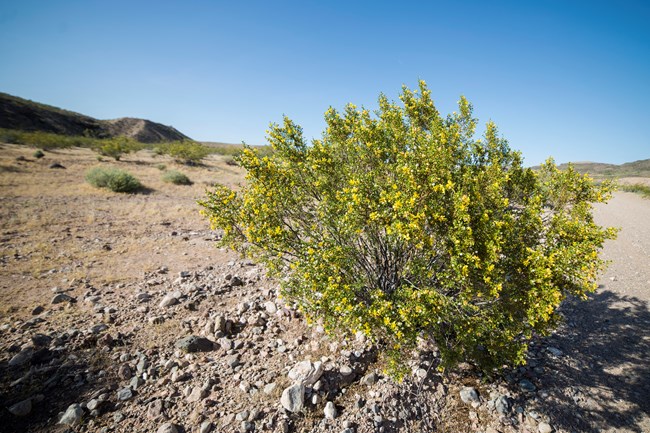
NPS/ Sometimes living up to 150 years old the creosotebush is able to reproduce in two separate ways. One such way is by producing clones. The plant sends up new shoots on the outside of the stem and the older stem, usually found in the center of the plant, will die. Another way creosote may reproduce is through seed production. However, the seeds of which are abundantly produced and contain 6 sets of chromosomes, have a very low survival rate. Creosotebush is commonly found on Parashant National Monument partly because it does so well at eliminating competition. When looking closely around the bases of the creosote plants, you will find little else growing. There is generally a barren circle extending out a few feet from each plant due to the fact that the plants roots are shallow and it is adept at collecting the faintest traces of moisture in the soil leaving little for other plants to use. It is also thought to be allelopathic, meaning it releases an inhibitory chemical into the nearby soil which inhibits the root growth of other plants. Despite its tenacity, creosotebush is vitally important to the ecology of the Mojave Desert. It provides shade and cover for plants, and an excellent place for jackrabbits, kangaroo rats, desert tortoises, kit foxes, and many other animals to build their burrows and dens. These characteristics and behaviors are the inspiration for the Spanish name "gobernadora" - meaning governess. From this lofty perch in the desert plant hierarchy, the creosote bush rules as a beautiful, successful, and only somewhat spiteful monarch of the land. 
NPS/ |
Last updated: January 15, 2020
